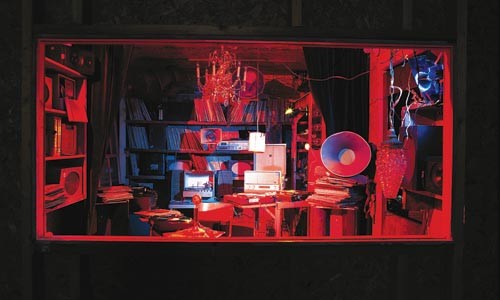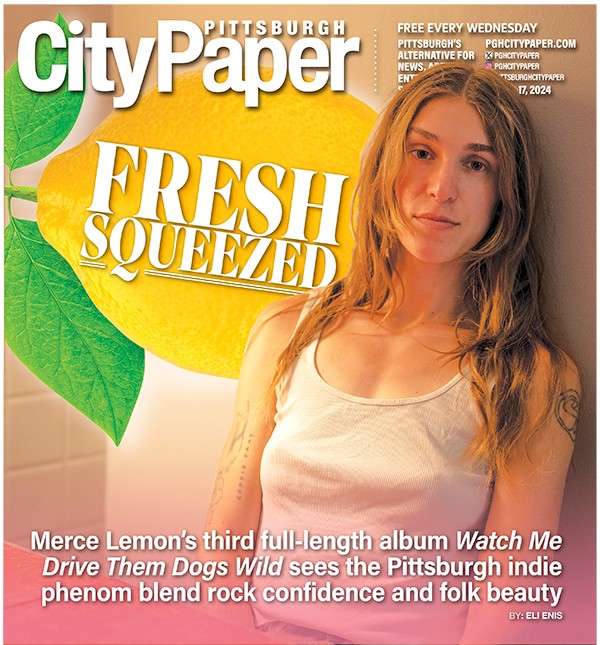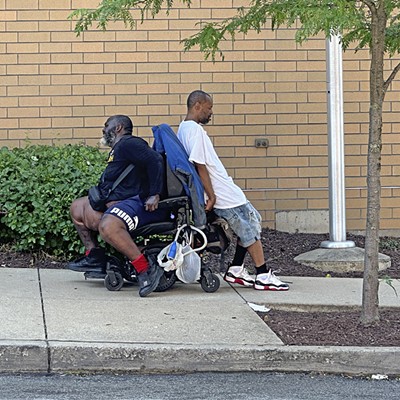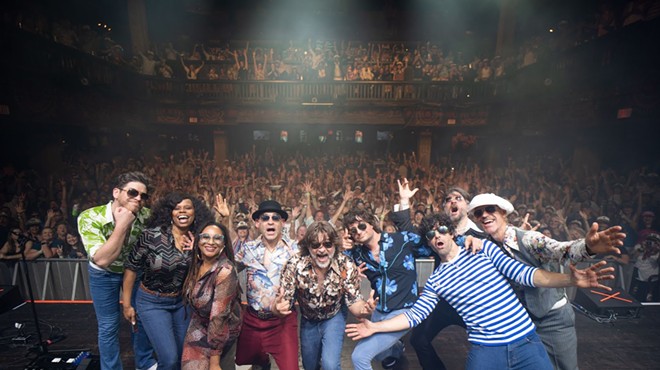From the darkness, a gruff, consumptive voice signals, "lights up."
"In the middle of a room," the narrator grumbles, "a man sits alone, surrounded by turntables and records ..."
In the center of the darkened Carnegie Museum of Art gallery, a wooden shack with glassless windows is filled with record albums, players, suitcases, chandeliers, lights, amplifiers. The narrator's Tom Waits-ian growl sets the scene -- we're outside of town, by the railroad tracks, where a woman walks down the road "with her shoes in her hands." Then we hear an operatic tenor -- from a record placed on a turntable by the drama's protagonist, R. Dennehy.
We actually never see Dennehy, the sole character in Janet Cardiff and George Bures Miller's mechanical-performance installation Opera for a Small Room. His existence is merely implied by a series of mechanically generated shadows, and by the soundtrack itself, which includes the sound of a record stylus being lifted and replaced on a skipping album, or a completed LP audibly flipped over. Through sound and shadow, Cardiff and Miller create the illusion of action, of theater.
Still, Dennehy is based on a real person. The Canada-and-Germany based artists say they found the enigmatic "R. Dennehy" collection of opera records in a secondhand store in a small town in British Columbia. They purchased the entire lot, and then wondered: Who was this Dennehy, obsessed with opera in remote Canada?
Opera features hundreds of those albums, and while it may have little to do with Dennehy's actual life, that's not the point. By deciphering the joys, sorrows and passions of a man from his cultural artifacts, Cardiff and Miller perform a feat of emotional archaeology, one that suggests even obscure lives merit the diva's stage.
The approach suggests Cardiff and Miller's previous work. In guided walks such as Jena Walk (Memory Field) and the 1999 Carnegie International piece In Real Time, the artists concentrated on "the physicality of memory" -- looking at the places where the past is both enhanced and obfuscated by place and objects.
Here, the artists concoct a tale of despair, redemption and, ultimately, tragedy. Dennehy is alone with the vicarious passion in these records. As the narrator tells us, "This place is falling apart. The animals are taking over; mice chewing on the walls. ... If they start on the records, I'll have to poison them." Yet there's also a clinging to opera's elite appeal: A series of intricate (if cheap) chandeliers hang from the shack's ceiling -- alongside a Heinz can.
Opera follows Dennehy through record after record, through a thunderstorm and a passing train, even into pop music: Hawaiian steel guitar, Percy Sledge. The work's "end" is set to a new piece of music, voiced by the narrator, aping the sound and style of swamp-Goth laureate Nick Cave's early solo albums. The blues-inspired sturm und drang reinforces the setting that acts as the artists' vision of a modern American opera. Tragedy, they're saying, is not merely the purview of La Traviata's Paris.
"The music doesn't really change anything," says the narrator in the piece's finale, "but it helps him in some way he doesn't really understand. ... [I]t's an opera, after all. Everyone dies in the end." But it would belittle this tiny world, built of the wood and wire of a passionate orchestra and a bold soprano, to dismiss its magic as its hero lies dying on the story's plinths.
Alternately, the audience might conjure its own operatic finale -- one that demonstrates that this music does change things. In my imagining of the Dennehy story, no one survives, or even necessarily dies happily. But on his deathbed, my Dennehy casts aside the records he drew his strength from. Like Prospero, my Dennehy chooses to grant them to others who can draw on the music's power: Cardiff, Miller, you and I. "Now my charms are all o'erthrown / and what strength I have's mine own."
Opera for a Small Room continues through July 19. Carnegie Museum of Art, 4400 Forbes Ave., Oakland. 412-622-3131















